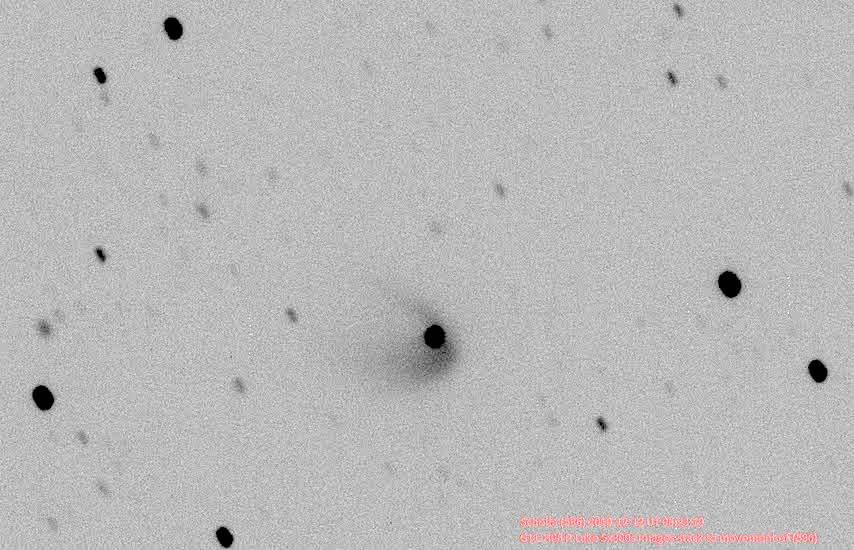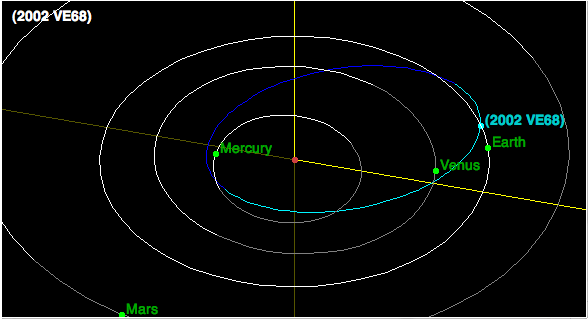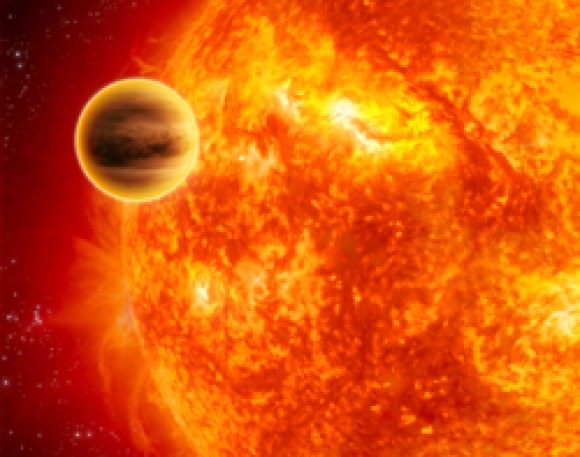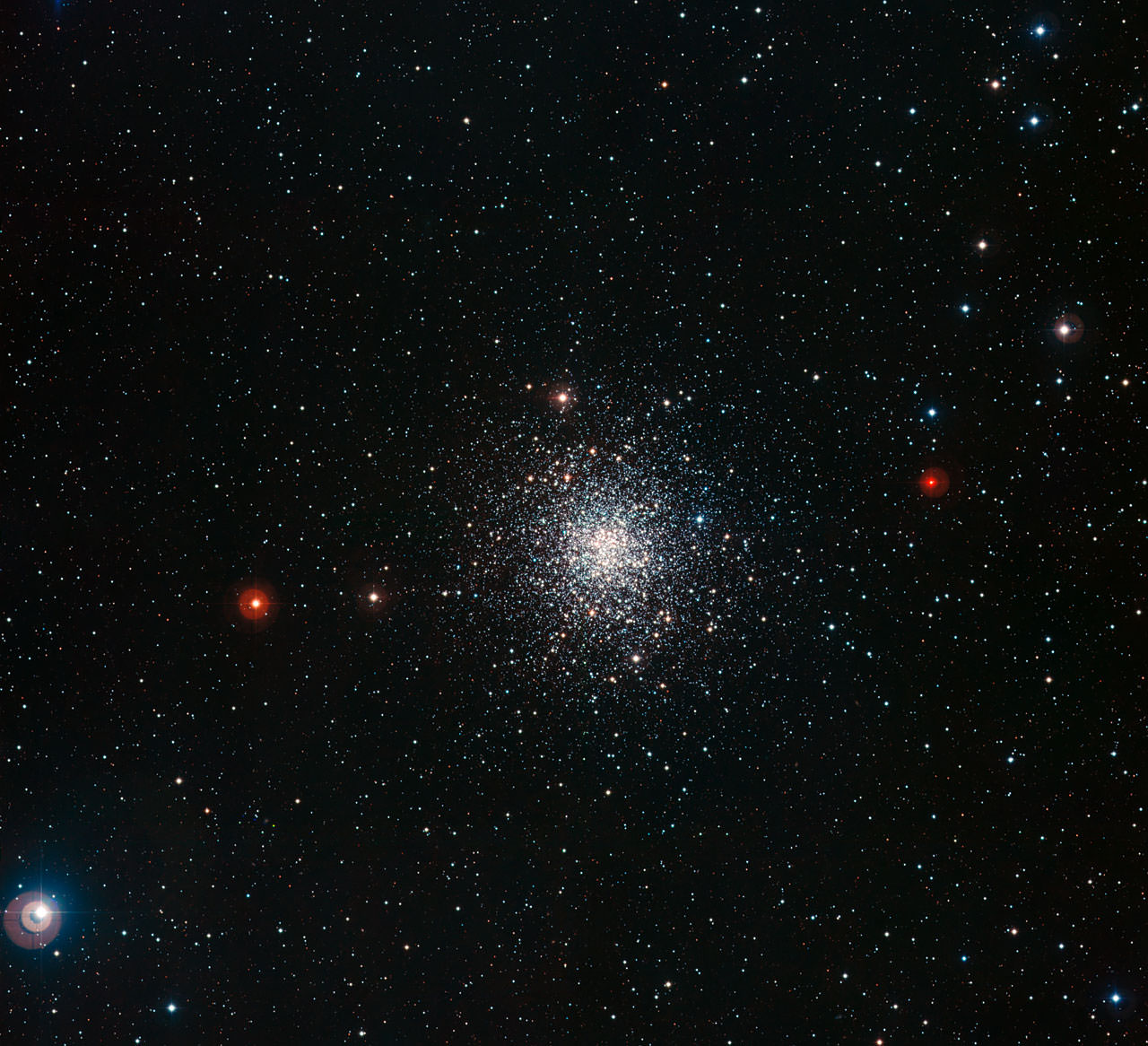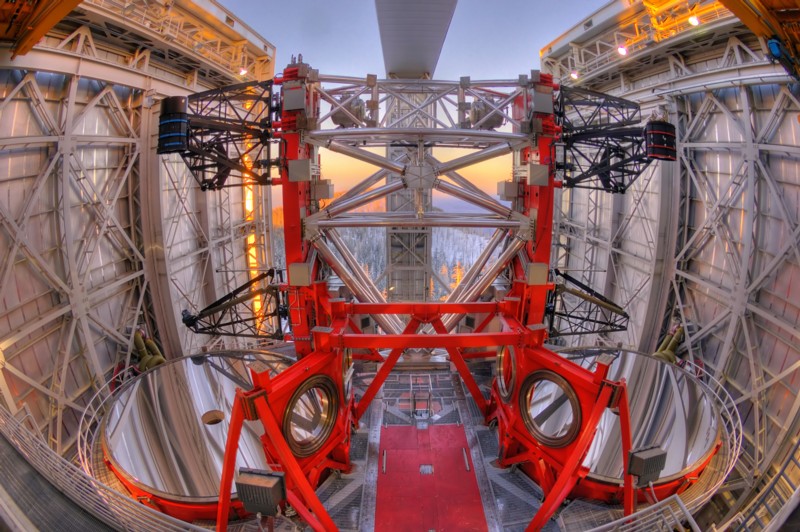I grew up playing with Legos, but never constructed anything like this! Andrew Carol built a replica of the The Antikythera Mechanism, the oldest known scientific computer, which was built in Greece probably around 100 BCE. No one in the current age knew about it until it was recovered from a shipwreck in 1901. Even then, it took a century until anyone could figure out what it was: an astronomical clock that determines the positions of celestial bodies with extraordinary precision. It is an analog computer with over 100 gears and 7 differential gearboxes, and is accurate to a day or two over its range.
Continue reading “Ancient Eclipse-Predicting Computer Rebuilt in Lego”
Asteroid Scheila Sprouts a Tail and Coma
[/caption]
When is an asteroid not an asteroid? When it turns out to be a comet, of course. Has this ever happened before? Why, yes it has. In fact it was just announced December 12, 2010 that the asteroid (596) Scheila has sprouted a tail and coma! This is likely a comet that has been masquerading as an asteroid.
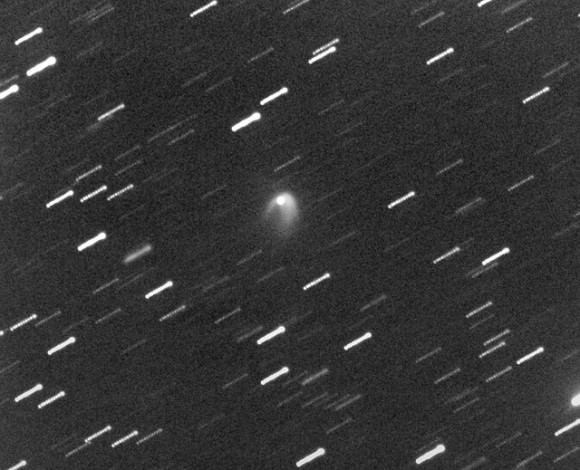
See an animation by Joseph Brimacombe at this link.
Steve Larson of the Lunar and Planetary Laboratory (LPL), University of Arizona first reported that images of the minor planet (596) Scheila taken on December 11th showed the object to be in outburst, with a comet-like appearance and an increase in brightness from magnitude 14.5 to 13.4. The cometary appearance of the object was confirmed by several other observers within hours.
A quick check of archived Catalina images of Scheila from October 18, November 2 and November 11 showed Scheila to look star-like, which is what asteroids look like from Earth. They just happen to be moving across the field of view in contrast to the fixed background stars. The image taken by Catalina on December 3rd shows some slight diffuseness and an increase in overall brightness. So, it appears this event began on or around December 3rd.
Upon hearing the news, there was some speculation that this might be evidence of an impact event. Had something crashed into asteroid Scheila? It seems unlikely, and this is a story we have heard before.
The asteroid discovered in 1979 and named 1979 OW7 was lost to astronomers for years and then recovered in 1996. It was subsequently renamed 1996 N2. That same year it was discovered to have a comet-like appearance, and many believed this was the signature of an impact between two asteroids. After years of inactivity 1996 N2 sprouted a tail again in 2002. One collision between two asteroids was unlikely enough. The odds of it happening again to the same object were essentially zero. What we had was a comet masquerading as an asteroid. This object is now known by its cometary name 133P/Elst-Pizarro, named after the two astronomers who discovered its initial cometary outburst.
The 2002 outburst and the discovery of more active asteroids showing mass-loss led to a paper (Hsieh and Jewitt 2006, Science, 312, 561-563) introducing an entirely new class of solar system objects, Main Belt Comets (MBC). MBCs look like comets because they show comae and have tails but they have orbits inside Jupiter’s orbit like main belt asteroids.
The most likely cause of the mass loss activity in MBCs is sublimation of water ice as the surface of the MBC is heated by the Sun. This is suggested most strongly by the behavior of the best-studied example, namely 133P/Elst-Pizarro. Its activity is recurrent, and it is strongest near and after perihelion, the point in its orbit nearest the Sun, like other comets.
MBCs are interesting to astronomers because they appear to be a third reservoir of comets in our solar system, distinct from the Oort cloud and Kuiper belt. Since we know of no way for these other reservoirs to have deposited comets in the inner solar system, the ice in MBCs probably has a different history than the ice in the outer comets. This allows researchers to study the differences in the Sun’s proto-planetary disk at three separate locations. This might lead to information on the Earth’s oceans, one of the continuing lines of investigation by solar system scientists.
Now it seems we have another MBC to add to the sample. And Scheila will probably be getting a new name soon. Asteroid (596) Scheila was discovered Feb. 21, 1906, by A. Kopff at Heidelberg. The 113Km in diameter ‘asteroid’ was named after an acquaintance, an English student at Heidelberg. In the future it will be called XXXP/Lawson or something similar, and Kopff’s Scheila will become just another footnote in the history of astronomical nomenclature.
First Four Exoplanet System Imaged
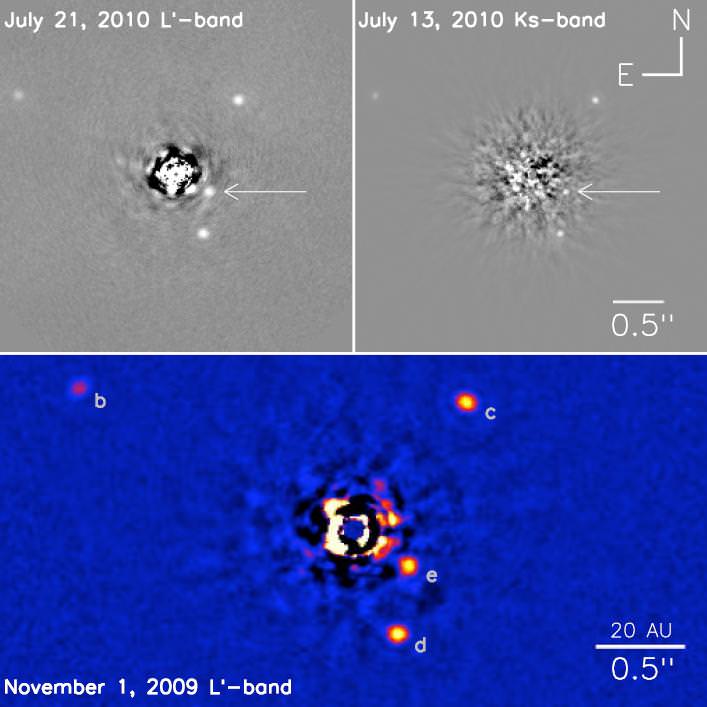
[/caption]
Among one of the first exoplanet systems imaged was HR 8799. In 2008, a team led by Christian Marois at the Herzberg Institute of Astrophysics in Canada, took a picture of the system directly imaging three giant planets. The team revisited the system in 2009 – 2010 with the Keck II telescope and discovered a fourth planet in the system.
The new planet, designated HR 8799e, orbits at a distance of 14.5 AU, making it the innermost planet in the system. The other planets all orbit at distances of >25 AU. The images were taken in the near infrared where they are most noticeable because the system is relatively young (<100 Myr) and the planets are still radiating large amounts of heat from their formation.
The youth of these planets is part of what makes them an interesting target for astronomers. There exists a controversy in the community of planetary astronomers on the formation method of large planets. One theory states that planets form from a single, monolithic collapse that creates the entire planet’s mass at one time. Another possibility is that the initial collapse forms small cores early on, but then there is substantial growth later, as the planetesimal sweeps up additional material.
The discovery of the new planet challenges both theories. Marois states, “none of [the theories] can explain the in situ formation of all four planets.” Thus, a combination of both methods may be in use in the system. Several belts of dust are also known in the system which may help astronomers determine what modes of formation were present.
In particular HR 8799e is challenging to an in situ formation because the gravitational perturbations from the parent star should disrupt the formation of large gas planets within 20-40 AU from a single formation. Instead, the new planet would likely have had to been a core collapse with subsequent accretion, or alternatively, moved to its present location via migration.
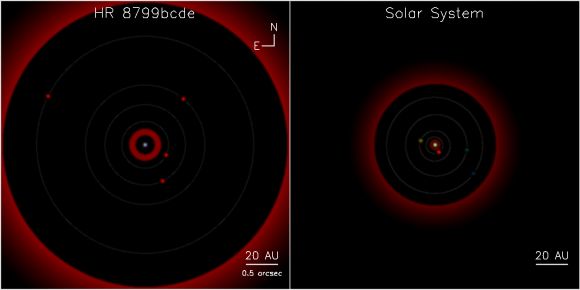
Studying systems such as this may help astronomers better understand the formation of our own solar system. The paper notes that the HR 8799 “does show interesting similarities with the Solar system with all
giant planets located past the system’s estimated snow line (~2.7 AU for the Solar system and ~6 AU for HR 8799)”. Additionally, both have debris disks beyond the outer orbits with similar temperatures.
Different methods of detecting planetary formation necessarily turn up different types of systems. Radial velocity studies detect massive, close-in planets whereas direct imaging most easily finds more distant planets. These two apparent populations represent different modes of planetary formation and for a full understanding, astronomers will need a continuous sampling that merges the two. Marois notes that we are still far from this goal as “[w]e just do not have enough exoplanets detected by direct imaging (~6 so far)” to make any conclusions besides constraints from the non-detections occurring thus far. To truly merge these two populations, astronomers will likely need to wait until more systems are discovered.
Previously, some work has been done to estimate the composition of the atmospheres of the three planets already discovered in the system. These systems have been suggested to have cloudy atmospheres for CH4 and CO. According to Marois, his team is, “planning more observations on e, but it will be hard. We might have to wait for new instruments, like the Gemini Planet Imager to do it properly.” This new instrument “will put a ‘thumb’ on the star (or what we call a coronagraph) to physically block the star light and allow ‘easy’ detection of nearby faint planets.”
While this discovery is a first, it will certainly be one of a long line of exoplanet images. Marois is obviously excited about the ability to directly image planets. I asked him what the single most important thing he wanted readers to get from this research. His response was simple, “That we now have the telescopes and instruments to SEE planets orbiting other stars – that’s really cool! The exoplanet field is still very young and we have so much to learn.”
Here’s Your Chance To Spread the Joy of Astronomy Around the World
[/caption]
Astronomy is one of the oldest sciences, and one of the most popular amateur hobbies around the world. In fact, there are thousands of astronomy clubs and groups across the globe, but in many developing countries they don’t have the resources to help educate their their members, as well popularize astronomy for students and the public.
“The enthusiasm of most of these groups are vast but they always come across the lack of resources to conduct programs,” said Thilina Heenatigala, from the Sri Lanka Astronomical Association, who has been instrumental in organizing astronomy book drives for fledgling astronomy clubs in developing countries the past few years.
Astro Book Drive is a project that works on helping improve astronomy education in developing countries by sharing resources. Right now, Astro Book Drive is gathering books and other resources for an astronomy club in Indonesia.
So, c’mon – you know you have some astronomy books, pamphlets and other items that you’d like to donate!
“Even though we are much advanced in technology and internet has a vast amount of resources,” Heenatigala told Universe Today, “most of the groups from developing countries are lacking resources to conduct astronomy programs and educate people. As coming from a developing country myself, I can tell you that one of the most basic, yet powerful ways to bring astronomy to developing countries is through the simple gift of books.”
If you’re like me, you probably have a surplus of astronomy materials lying; these materials are valuable to groups from developing countries.
“This is a global effort and anyone/group welcome to donate what they have, even one book can make big difference,” said Heenatigala. “I’m hoping to keep the book drive running from December through February 2011.”
The group from Indonesia, langitselatan (LS) – Southern Skies – is an astronomy communication and educator media in Indonesia run by young group of astronomy enthusiasts with the vision of getting astronomy in the local media, astronomy education and awareness throughout the country. Heenatigala said LS has been working tirelessly over the years to achieve these by conducting star parties, telescope training, teachers training, hands on activities, story telling session, astronomy discussion and talk shows and astro-presentation.
To expand their efforts, LS hopes to build a small library which will be used by the members, students and the local community. Through the library project, they hope to increase the reading habits of young students and teachers as well. To achieve their dream of setting up a library to improve astronomy education in Indonesia, Astro Book Drive calls the international community to donate Astronomy reading materials.
There are other book drives as well, and will probably be more coming up in 2011. The Astro Book Drive project was started in 2009 as part of the International Year of Astronomy.
“Usually the procedure is to get a group/institutes from a wealthy country to run a book drive for a group in developing country, where they donate from 3 – 10 boxes of books. But for the Indonesian book drive, I had to put an open call since it’s an effort to set up an Astro Library there.”
For more information on specifically the book drive for Indonesia, see this link
Astro Book Drive website main page.
You can see a list of projects at this link.:
Taking a Galaxy’s Temperature
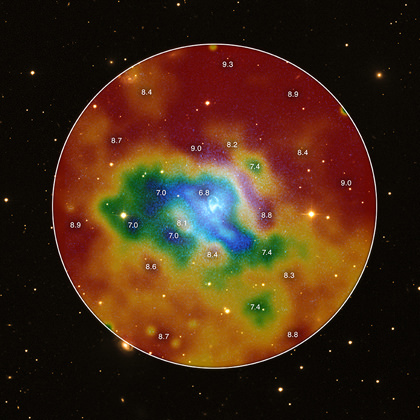
[/caption]
The role that supermassive black holes play in the formation of galaxies is a “hot” topic in astronomy. Using the Chandra X-Ray Observatory, an international team of astronomers have been able to create a temperature map of one galaxy, NGC 5813, which is located in the Virgo III Group of galaxies. The new map shows in unprecedented detail the history of various periods of activity of the Active Galactic Nucleus (AGN), which is associated with a supermassive black hole that resides at its center. They found that regular outbursts of the AGN maintained the temperature of the gas in the region of the galaxy, continually reheating the gas that would otherwise have cooled down.
Paper co-author Dr. Scott Randall of the Chandra Mission Planning Team at the Harvard-Smithsonian Center for Astrophysics said, “Although there are other systems that show AGN outburst shocks, this is still the only system where unambiguous shocks from multiple outbursts are seen. This allows us to directly measure the heating from shocks, and directly observe how often these shocks take place. Thus, at present NGC 5813 is *uniquely* well suited to the study of AGN heating.”
By studying images taken by the Chandra X-Ray Observatory, and combining these observations with those taken by the Giant Metrewave Radio Telescope (GMRT) and the Southern Astrophysical Research Telescope (SOAR), they were able to make out large cavities produced by periods of activity in the supermassive black hole. The researchers were able to determine that there were three pairs of large cavities, which corresponded to active outbursts of the galactic nucleus 3 million, 20 million and 90 million years ago (from our perspective here on Earth).
What makes the galaxy NGC 5813 especially suited to this study is its relative isolation from other galaxies that could influence the formation of these cavities – it is an older galaxy that is relatively undisturbed, allowing for these cavities in the gas to persist over such a long time period.
Current models of galaxy formation must take into account just how much of an influence the output of the supermassive black hole at the center of a galaxy has on the formation of stars within the galaxy, and the evolution of the shape and size of the galaxy as a whole. This process of “AGN feedback” has a dramatic influence on how the galaxy takes shape. The research by Dr. Randall, et. al shows an intimate portrait of this process.
Dr. Randall explained, “This is an important result for stellar formation and galaxy evolution. The AGN heats the gas, preventing it from cooling and forming large amounts of stars. There have been several galaxy evolution models proposed that require this kind of “AGN feedback” near the centers of galaxies to explain the observed differences in galaxies. Here we show explicitly that this kind of feedback can and does take place, at least in this system.”
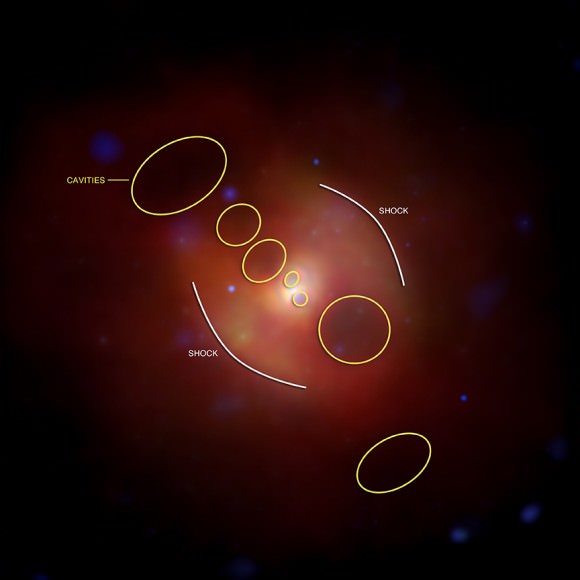
As you can see in the image directly above, various outbursts of the AGN create shock waves in the gas near the center of the galaxy. As these shock waves expanded and the galaxy evolved over millions of years, the heat generated by the shocks spread outwards and into the gas surrounding NGC 5813. The gas between all of the galaxies in a cluster is called the intracluster medium (ICM). The heat – which is produced by the friction of the gases at the edge of each of the shock waves – radiates outward into the surrounding gas, increasing its temperature.
The output of the jets streaming from the supermassive black hole in the center vary over a span of roughly 10 million years, and the amount of energy that each outburst puts out is rather variable – the difference between the last two largest outbursts, for example, is almost an order of magnitude.
This process is cyclical, though the details of the mechanisms involved are still a topic that isn’t completely understood.
Dr. Randall explained this process as follows:
“…the gas cools radiatively, and flows in towards the AGN. The cool gas is rapidly accreted by the black hole, dirving [sic] an energetic outburst. The outburst heats the gas (via shocks), stopping the inflow and starving the AGN. The gas is then able to cool once more, and the cycle repeats, with, in this case, a period of about 10 million years. However, the fine details of how the jet and the ICM interact are not currently well uderstood [sic], and it is not clear how well this simple model describes reality. Our goal with the upcoming deep Chandra observation is to better understand the details of this process, most likely through comparisons with detailed numerical simulations.”
Further observations of NGC 5813 in the fall of 2011 using Chandra are in the works, Dr. Randall said. The results of their analysis will be published in the Astrophysical Journal. A preprint version of the paper, “Shocks and Cavities from Multiple Outbursts in the Galaxy Group NGC 5813: A Window to AGN Feedback,” is available on Arxiv.
Sources: Chandra press release, Arxiv paper, email interview with Dr. Scott Randall
Venus Has a Moon?
[/caption]
Astronomers have been busy trying to determine the spin period and composition of Venus’ moon. December 8, 2010, results were announced by JPL/Caltech scientists, led by Michael Hicks.
“Wait a minute; back up”, I hear you ask. “Venus has a Moon?”
Of course it does. Well, kind of…
Let me explain.
It has the rather unfortunate name of 2002 VE68. That is because it was discovered on November 11, 2002 by LONEOS, the Lowell Observatory Near Earth Object Search. 2002 VE68 is an earth orbit-crossing asteroid that has been designated a Potential Hazardous Asteroid by the Minor Planet Center. For obvious reasons, this makes it a very interesting subject of study for JPL scientists.
2002 VE68 used to be a run of the mill, potential impact threat, Near Earth Object. But approximately 7000 years ago it had a close encounter with Earth that kicked it into a new orbit. It now occupies a place in orbit around the Sun where at its closest it wanders inside the orbit of Mercury and at its furthest it reaches just outside the orbit of the Earth. It is now in a 1:1 orbital resonance with Venus.
An orbital resonance is when two orbiting bodies exert a regular, periodic gravitational influence on each other due to their orbital periods being related by a ratio of two small numbers. For example, Pluto and Neptune are in an orbital resonance of 2:3, which simply means for every two times Pluto goes around the Sun, Neptune makes three trips around.
In the case of Venus and 2002 VE68, they both take the same time to orbit the Sun once. They are in a 1:1 orbital resonance. So by definition, 2002 VE68 is considered a quasi-satellite of Venus. If you watch the Orbital Viewer applet at the JPL small body page you can watch this celestial dance as the two bodies orbit the Sun and each other as 2002 VE68 dodges Earth and Mercury in the process.
Often these resonances result in an unstable interaction, in which the bodies exchange momentum and shift orbits until the resonance no longer exists. In this case, scientists believe 2002 VE68 will only remain a Venusian quasi-satellite for another 500 years or so.
So getting back to the story, Hicks and his team used the recent close apparition of 2002 VE68 to do photometric measurements over the course of three nights in November using the JPL Table Mountain 0.6m telescope near Wrightwood, California. From the color data they obtained they determined that 2002 VE68 is an X type asteroid. This is a group of asteroids with very similar spectra that could potentially have a variety of compositions. They are further broken down into Tholen classification types as either E, M or P types. Unfortunately Hicks’ team was not able to resolve the sub-classification with their equipment.
They were able to determine the approximate size of the asteroid to be 200 meters in diameter, based on its absolute magnitude, and they determined a spin rate of 13.5 hours. The amplitude of the fluctuation on the light curve of 2002 VE68 could imply hat it is actually a contact binary, two clumps of asteroidal material orbiting a center of mass in contact with each other.
For more information on some of the strange and curious beasts in the asteroidal zoo, visit the NASA Near Earth Object Program website.
WASP-12b: A Carbon Rich Exoplanet
[/caption]
Since its discovery in 2008, WASP-12b has been an unusual planet. This 1.4 Jovian mass, gas giant lies so close to its parent star that gas is being stripped from its atmosphere. But being stripped away isn’t the only odd property of this planet’s atmosphere. A new study has shown that it’s full of carbon.
The discovery was published in today’s issue of Nature was led by Nikku Madhusudhan, a postdoctoral researcher at Princeton University in combination with the Wide Angle Search for Planets (WASP) team that originally discovered the planet. Unlike other recent studies of planetary atmospheres, this study did not employ transit spectroscopy. Instead, the team examined the reflective properties of the planet at four wavelengths, observations of which three came from another study using the Canada-France-Hawaii Telescope in Hawaii.
To determine the composition of the atmosphere, the flux of the planet at each of these wavelengths was then compared to models of planetary atmospheres with differing compositions. The models included compounds such as methane, carbon dioxide, carbon monoxide, water vapor and ammonia as well as the temperature distribution of the planet.
For a typical hot Jupiter, models have most closely fit a ratio of about 0.5 for carbon to oxygen which suggests that oxygen is more prevalent in the atmospheres, often in the form of water vapor, as well as very little methane. For WASP-12b, Madhusudhan’s team found an abundance of more than 100 times that of standard hot Jupiters for methane (CH4). When examining the carbon to oxygen ratio, they discovered a ratio greater than one implying that the planet is unusually carbon rich.
While WASP-12b is certainly not a friendly place for life, the discovery of a planet with so much carbon may hold implications for life elsewhere in the universe. Astronomers expect that the abundance was due to the formation of the planet from rocky materials high in carbon as opposed to icy bodies like comets. This suggests that there may be an entire range of carbon abundances available for planets. With the versatility of carbon for forming organic compounds, this enhanced abundance may lead to other, rocky planets covered in tar like substances rife with organics.
The team speculates that such worlds may exist in the same solar system. Previous studies have shown that WASP-12b’s orbit is not circular and some have suggested that this may indicate the presence of another body which tugs on 12b’s orbit.
New Look at an Ancient Swarm of Stars
[/caption]
Globular clusters form during the earliest stages in a galaxy’s development, so clusters like this one, M 107, or NGC 6171 are some of the oldest objects in the Universe. Typically, globular clusters formed about 10 billion years ago, and astronomers say that studying these objects can provide significant insights into how galaxies, and their component stars evolve. While M 107 has been observed many times, this new look from ESO shows a stunning view of this swarm of stars.
Located about 21,000 light years away, M107 is not visible to the naked eye. But, with an apparent magnitude of about eight, it can easily be observed from a dark site with binoculars or a small telescope.
The globular cluster is about 13 arcminutes across and is found in the constellation of Ophiuchus, north of the pincers of Scorpius. Roughly half of the Milky Way’s known globular clusters are actually found in the constellations of Sagittarius, Scorpius and Ophiuchus, in the general direction of the centre of the Milky Way. This is because they are all in elongated orbits around the central region and are on average most likely to be seen in this direction.
This image is composed from exposures taken through the blue, green and near-infrared filters by the Wide Field Camera (WFI) on the MPG/ESO 2.2-metre telescope at the La Silla Observatory in Chile.
Source: ESO
Large Binocular Telescope Achieves First Light
After eight and a half years in the making, the Large Binocular Telescope (LBT) is finally ready to begin operation. Yesterday, it unveiled its first image (shown above), the target of which was Beta Pictoris.
Continue reading “Large Binocular Telescope Achieves First Light”
Stars Shrouded in Glittering Zirconium Light up the Sky
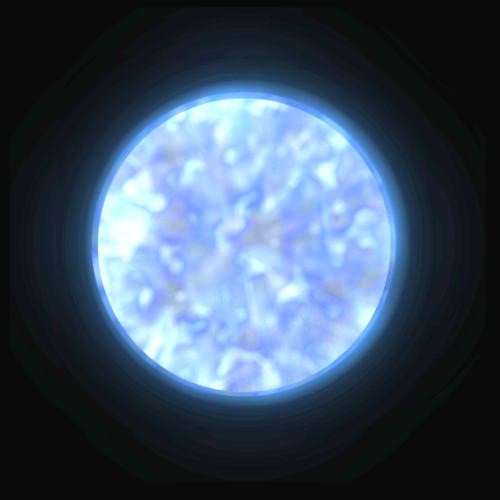
[/caption]
Its been said that the Universe isn’t stranger than you can imagine, its stranger than you can’t imagine. Nowhere is this more true than the study of stars. Recently, a team of scientists from the Armagh Observatory in Northern Ireland have discovered a star that is enveloped by clouds of glittering zirconium! Its a metal you might be more familiar with in jewelry to make false diamonds but it now looks like stars are getting in on the act and becoming more sparkly than they are already.
The research team, led by graduate student N. Naslim and her supervisor Dr. Simon Jeffrey, were looking for clues to the lack of hydrogen on the surface of helium rich hot subdwarf stars, when compared to other similar stars. Using the 3.9m Anglo-Australian telescope at Siding Spring Observatory in New South Wales, the study focused on a star called LS IV-14 116 which lies at an incredible distance of 2000 light years.
By using a spectroscope attached to the telescope, the team was able to split the incoming starlight into its component parts (much like water droplets in the atmosphere do to sunlight to make a rainbow). Along with the expected patterns which showed the presence of certain elements, they were surprised to find lines in the spectrum which were not so easily identified. A careful study showed the lines were due to the presence of a form of zirconium that should only exist in temperatures in excess of 20,000 degrees. This was a first, no zirconium of this type had ever been found in a stellar spectrum before.
Team member Prof. Alan Hibbert built a computer model that enabled them to deduce that the zirconium existing on LS IV-14 116 was some ten thousand times more than the concentration found in the Sun. This highly unexpected result led the team to conclude that the abundance of zirconium is caused by the formation of cloud layers in the star’s atmosphere.
“The star doesn’t have a corona like the Sun. Our model shows the huge excess of zirconium that we discovered is on the photosphere (the visible ‘surface’ of the star), where it forms cloud layers much like stratus clouds on Earth.” Naslim told Universe Today. It seems that other elements, chiefly metals heavier than calcium, seem to form in high concentrations too but seem scarce in layers above and below. This could have a dramatic effect according to Dr. Natalie Behara from the Université Libre de Bruxelles appearing as many thin cloud layers in the atmosphere, each due to a different metal.
Further work from the team suggests that the star is shrinking from a bright cool giant to a faint hot subdwarf and as it does, different elements sink or float up in the atmosphere making the current composition very specific to the star’s recent history.
Naslim explains that “The huge excess of zirconium was a complete surprise. We had no reason to think this star was more peculiar than any other faint blue star discovered so far.” Its great to see that whilst we know so much about the Universe now, there are still discoveries that come along and surprise us. This latest discovery of zirconium rich stars has yet again shown us that we mustn’t become complacent and think we know everything, it keeps science interesting, it keeps it alive.
Source: from the Royal Astronomical Society.
Mark Thompson is a writer and the astronomy presenter on the BBC One Show. See his website, The People’s Astronomer, and you can follow him on Twitter, @PeoplesAstro

